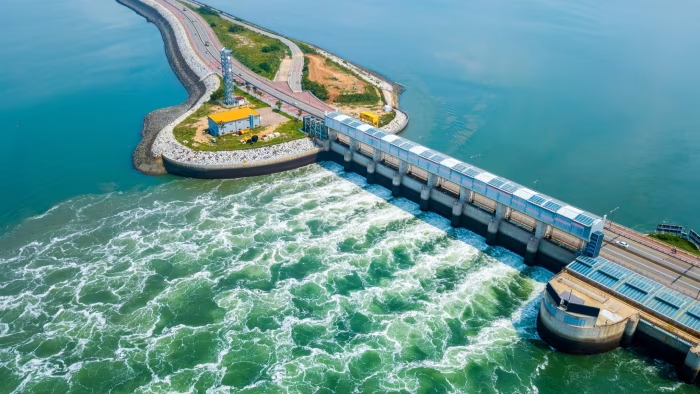Stay informed with free updates
Simply sign up to the Renewable energy myFT Digest — delivered directly to your inbox.
Developing large-scale tidal power stations in the UK would be likely to push up electricity costs, according to a study that marks the latest attempt to assess whether Britain should be making more of its geography by harnessing the tides.
While tidal technology could lead to a lower wholesale cost of electricity, that would be outweighed by subsidies and other costs, modelling by the state-owned National Energy System Operator found.
“The results show that when the total cost to the consumer is considered, including wholesale market costs, subsidy requirements and the impact on existing subsidies . . . the counterfactual scenario where no tidal range is included is the cheapest,” it said.
The report, published on Wednesday, recommends further exploration of financing models for the technology as well as a “strategic approach” to where any projects are developed, to get value for money.
Neso was taken over by the government in 2024 and given a wider remit including advising the government on energy policy.
The government is trying to develop new sources of low carbon power to meet its goal of decarbonising the power system by 2030 and the whole economy by 2050.
Electricity demand is projected to at least double by 2050 compared with 2023 levels, boosted by consumers buying more electric cars and heat pumps and more data centres being developed.
So far, Britain has taken advantage of its climate and its coastlines to become the world’s second-largest offshore wind market. But there have been persistent questions over whether it should be making more of its tides.
Neso’s report, undertaken in conjunction with Arup, looks at tidal range technology — barrages or lagoons that use high tides to drive a turbine. Tidal stream technology, by contrast, uses tidal currents to spin turbines underwater.
Both involve high costs and technological complications that have held back large-scale deployment in Britain.
In January 2018, Greg Clark, then business secretary, refused to approve taxpayer subsidies for a planned £1.3bn tidal lagoon in Swansea Bay, saying it would not deliver value for money.
That was despite an independent review into tidal lagoons published by former energy minister Charles Hendry in 2017, which concluded they could “deliver low carbon power in a way that is very competitive with other low carbon sources”.
Neso’s report compared scenarios involving different amounts of tidal range deployed in the 2030s and 2040s with a scenario without any tidal range at all. It found that total electricity system costs were more expensive than the counterfactual across all scenarios.
However, the effect was muted if the projects were built under a regulated asset base funding model, in which consumers start paying for the technology during construction. The idea is to reduce developers’ risks and therefore cut finance costs. This model is currently being used to develop the Sizewell C nuclear power station in Suffolk.
Electricity system costs are a major issue for the current Labour government. It has pledged to bring household bills down by £300 a year by 2030, despite widespread scepticism in the industry over whether this is possible.
One route would be to move the costs of subsidies and other policies off electricity bills and put them into general taxation, but that would be controversial given concerns about high costs across the economy.
The Department for Energy Security and Net Zero said: “We are open to considering well-developed proposals for harnessing tidal range energy in the bays and estuaries around our coastlines, which demonstrate value for money.”
